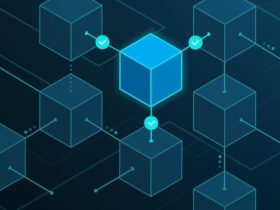Every dawn brings fresh developments in artificial intelligence—breakthroughs that reshape industries, stir policy debates, and redefine what machines can accomplish. Welcome to AI Dispatch: Daily Trends and Innovations – May 22, 2025, your expert-curated, op-ed–style briefing on today’s most impactful AI news. In this edition, we examine:
-
AI in the Modern Workspace: How AMUSNET’s CISO Stoyan Popov showcased generative AI at Google Cloud Day.
-
Inside OpenAI’s Executive Duo: The leadership philosophies of Sam Altman and Jony Ive.
-
Chatbots as Therapists: Taiwan’s new AI mental-health pilot and cross-strait implications.
-
The Trough of Disillusionment: Why The Economist warns of an AI hype backlash.
-
Google AI Ultra: Google One’s foray into real-time, context-aware assistant features.
-
Peering into the Black Box: The Atlantic’s investigation of deep-learning opacity and accountability.
Through concise reporting, incisive commentary, and SEO-rich insights, we unpack what today’s headlines mean for technologists, executives, regulators, and end users. Let’s dive in.
1. AI in the Modern Workspace: AMUSNET Meets Google Cloud Day
What Happened
At Google Cloud Day’s “Future of Work” track, AMUSNET CISO Stoyan Popov unveiled a proof-of-concept that integrates large-language models (LLMs) directly into corporate intranets. Using Google’s generative AI APIs, his team demoed:
-
Context-aware policy drafting: Auto-generating draft security policies based on real-time risk metrics.
-
Intelligent incident triage: Classifying security alerts and suggesting remediation code snippets.
-
Conversational knowledge bases: Employees simply ask for “our VPN encryption standards” in natural language.
Popov stressed the balance of innovation and control: every AI suggestion is logged, human-reviewed, and fed back to refine model prompts.
Source: AMUSNET News
Analysis & Commentary
This enterprise-grade AI integration exemplifies the shift from research prototypes to production systems. Key takeaways:
-
Compliance by design: Logging and human-in-the-loop validation—mandatory in regulated sectors—demonstrate that generative AI can enhance, not compromise, security workflows.
-
Vendor lock-in risks: Heavy reliance on Google’s APIs may cement cloud dependencies; CIOs must weigh agility against potential switching costs.
-
Cultural change: Popov’s team trained 500 staff in prompt engineering—an emerging core competency. Organizations that neglect tailored AI upskilling risk underutilizing or misusing these powerful tools.
Implications
Enterprises should begin small, with high-impact use cases like compliance drafting, then expand to broader workflows. Security leaders must champion AI literacy and collaborate closely with DevOps to embed guardrails from day one. Ultimately, Popov’s demo confirms that AI’s real value lies in architecting human-centric, auditable systems—not in flashy demos alone.
2. OpenAI’s Executive Duo: Sam Altman & Jony Ive
What Happened
In a candid memo, OpenAI outlined the collaborative dynamic between CEO Sam Altman and Chief Product Officer Jony Ive—the legendary industrial designer behind Apple’s aesthetic revolution. Together, they have:
-
Merged vision and design: Altman’s moonshot ambitions channeled through Ive’s obsession with user experience.
-
Prioritized safety: Ive’s prototyping rigor complements Altman’s AI safety frameworks, resulting in tighter release thresholds.
-
Accelerated product cycles: Historied sketches and rapid wireframes from Ive’s studio drive weekly iteration sprints.
Source: OpenAI Blog
Analysis & Commentary
The synergy of a visionary engineer and a design maestro signals OpenAI’s maturation from research lab to product powerhouse. Consider:
-
Democratizing AI: Ive’s insistence on elegance ensures that advanced AI capabilities feel approachable—even delightful—to nontechnical users.
-
Ethics by interface: Subtle UX cues (e.g., “Are you sure?” dialogs before sensitive queries) embed ethical prompts directly into the product flow.
-
Competitive moat: As rival labs race to match raw model performance, OpenAI’s user-centered design may prove the decisive differentiator.
Implications
Other AI ventures should ask: does your roadmap include design thinking at its core, or is UX an afterthought? True productization of AI demands both technical robustness and intuitive, ethically resonant interfaces.
3. Chatbots as Therapists: Taiwan’s AI Mental-Health Pilot
What Happened
Taiwan’s Ministry of Health launched T-AI, an AI-powered chatbot trained on Mandarin and Taiwanese Hokkien therapy transcripts. The pilot offers 24/7 mental-health support for:
-
Stress and anxiety screening
-
Basic CBT (Cognitive Behavioral Therapy) exercises
-
Referral suggestions to licensed professionals
The Guardian reports China’s state media has criticized the program, warning of “psychological manipulation” if data crosses the strait.
Source: The Guardian
Analysis & Commentary
Healthcare is a frontier where AI’s promise and peril collide:
-
Accessibility vs. accuracy: T-AI democratizes initial mental-health triage—but can it truly discern nuances of trauma?
-
Data sovereignty: Taiwan’s insistence on local data hosting underscores global debates over patient privacy and cross-border data flows.
-
Regulatory gray zones: Neither pharmaceutical regulators nor traditional medical boards fully grasp chatbot liability.
Implications
Policymakers must craft frameworks that allow innovation in AI-driven care while mandating transparency, regular audits, and clear escalation paths to human clinicians. For startups, deep partnerships with licensed mental-health professionals will be essential to build both efficacy and trust.
4. The AI Trough of Disillusionment: An Economist Perspective
What Happened
In “Welcome to the AI Trough of Disillusionment,” The Economist argues that the hype cycle around AI is cresting. Key points:
-
Unmet expectations: Corporations cite slower-than-promised ROI and integration headaches.
-
Talent crunch: Demand for ML engineers outstrips supply, driving salaries past sustainable levels.
-
Ethical fatigue: Continuous fire drills over bias, deepfakes, and data poisoning have left boards wary.
Source: The Economist
Analysis & Commentary
History shows that every technological wave meets a trough before mainstream adoption. For AI:
-
Reality check: Pilots that sailed smoothly in labs stall at scale when confronted with legacy data, fragmented teams, and conflicting KPIs.
-
Skill ecosystem: The solution lies not in poaching PhDs but in upskilling adjacent roles—product managers, data engineers, and compliance officers.
-
Pragmatic ethics: Rather than broad declarations, companies need concrete bias-testing pipelines and incident-response playbooks.
Implications
CEOs must reset expectations: AI isn’t a plug-and-play profit engine but a strategic capability requiring cultural buy-in, process redesign, and incremental milestones. Those who endure the trough with clear metrics and resilient teams will emerge poised to reap the true benefits of artificial intelligence.
5. Google AI Ultra: Next-Gen Assistant via Google One
What Happened
Google announced AI Ultra, a new tier of its Google One subscription that offers:
-
Real-time summarization of lengthy web articles or emails.
-
Context-aware calendar suggestions, detecting vague invites and auto-proposing precise meeting times.
-
Multi-modal queries, allowing voice and image inputs in the same conversation.
Early testers laud “remarkably human-like recall” and seamless device-handoff.
Source: Google Blog
Analysis & Commentary
Google AI Ultra signals the rise of “subscription AI”—premium, directly monetized intelligence layers:
-
Value capture: Rather than solely driving ad revenues, Google is experimenting with recurring AI subscription fees.
-
Data-driven enhancement: Google One’s existing cloud storage yields rich user context—enabling more personalized suggestions.
-
Competitive response: Microsoft and Apple must accelerate their own AI-plus-subscription models to defend user ecosystems.
Implications
Consumers may accept incremental subscription fees for genuine productivity gains—but saturation risks loom. To justify recurring costs, Google must continue shipping breakthrough features and maintain transparent trust frameworks around data usage.
6. Peering into the AI Black Box: Calls for Accountability
What Happened
The Atlantic’s deep dive, “Inside the AI Black Box,” interviews former OpenAI researchers and regulatory experts. Highlights include:
-
Proprietary opacity: Lab heads admit that model internals remain too complex for full human understanding.
-
Audit difficulties: External audits are stymied by IP protection and technical hurdles in replicating large models.
-
Emerging standards: The EU’s upcoming AI Act mandates model documentation (“model cards”) and post-deployment monitoring.
Source: The Atlantic
Analysis & Commentary
Opacity undermines trust at a moment when AI’s stakes—from medical diagnosis to autonomous driving—are existential:
-
Explainability trade-offs: Simplifying models for interpretability often degrades performance. The real challenge is designing interfaces that convey confidence intervals and uncertainty, not pretending perfect certainty.
-
Regulatory lead: Europe’s AI Act may become the de-facto global standard, forcing US-based labs to comply or risk market exclusion.
-
Collaborative auditing: Academia, industry consortia, and civil-society groups must co-create tooling for scalable, privacy-preserving audits.
Implications
AI developers should invest early in transparent documentation practices—model cards, data provenance logs, bias impact statements—not because it’s legally required today, but to build durable trust with enterprise and government customers. Courts and legislators will look back unfavorably on entities that cut corners in AI accountability.
Conclusion
Today’s trends reveal a maturing AI ecosystem grappling with real-world complexity: enterprise adoption, human-centered design, cross-border ethics, hype-cycle fatigue, subscription economics, and the urgency of auditability. The next frontier lies not only in pushing silicon faster or models larger, but in weaving AI responsibly into the fabric of business, healthcare, and society.
Key Takeaways
-
Operational Integration: Like AMUSNET’s security AI, successful deployments tie directly into existing workflows with clear guardrails.
-
Design-Driven Products: OpenAI’s Altman-Ive partnership underscores the imperative of marrying vision with user empathy.
-
Regulatory Foresight: Both Taiwan’s T-AI chatbot and Europe’s AI Act illustrate the critical role of policy in guiding ethical innovation.
-
Realistic Expectations: The Economist’s “trough” insight reminds leaders to budget for skill gaps, integration challenges, and incremental wins.
-
Transparent Ecosystems: From Google AI Ultra’s subscription model to The Atlantic’s call for audits, trust will be the defining currency of AI’s next chapter.
Stay tuned to AI Dispatch as we continue to track, analyze, and opine on the developments that will shape our algorithmic future.


















Got a Questions?
Find us on Socials or Contact us and we’ll get back to you as soon as possible.